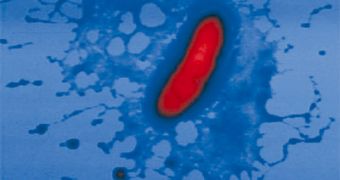Besides the fact that they could save a lot of space from being filled with plastic bottles, the newly-found bacterial engineers can also turn cheap, environment-unfriendly PET plastic in bottles into a biodegradable type of plastic named PHA.
One of the many applications of the PHA plastic is in medicine, where it comes in the form of stents (tubes that support arteries) or wound dressings, for example, but it can also be engineered in order to extend and enhance its physical properties. However, the lack of a process that could provide it in larger quantities previously prevented PHA from receiving too much attention.
This was until the upcycling process (as the new bacteria-using process was labeled) came along in order to offer new economical viability standards to PET bottle recycling. Up to now, only 23.5% of the PET bottles produced in the US were recycled, and that only yielded more PET plastic. But recently, as Kevin O'Connor from the University College in Dublin, Ireland, says, scientists "wanted to see if [they] could turn the plastic into something of higher value in an environmentally friendly way."
Based on common knowledge, pyrolysis (heating PET in oxygen-free environments) decomposes it into terephthalic acid (TA) and small amounts of gas and oil. Also, it was known that there are species of bacteria that feed on TA, while other species produce PHA when stressed. Naturally, scientists tried to find one that could do both. "It was a long shot to be honest," states O'Connor. None of the existing cultures around the world that were known to thrive on TA produced PHA in return. As such, they began searching for undiscovered strains, living in natural PHA-containing environments.
The analysis of soil bacteria from a PET bottle processing factory that were likely to be exposed to certain amounts of TA, resulted in finding 32 colonies that were able to survive on TA as their only energy source in laboratory conditions. 2 days later, 3 of the cultures screened for PHA, all resembling known Pseudomonas strains, yielded positive results. As their new step, researchers want to work on the efficiency rate of the process. According to O'Connor, currently "A quarter to a third of each cell is filled with plastic – we want to increase that to 50 to 60%."
The research attracted lots of attention and praises, such as that of Sudesh Kumar, a microbiologist from the University of Science in Penang, Malaysia, who stresses: "There are many other systems that are economically more viable to produce PHA with better material properties, but Kevin's work offers an interesting novel approach to solve the problem of PET accumulation in landfill dumps."
Still, using only the current approach is not likely to impress industry, much to O'Connor's deception. As he admits, "Working with this kind of environmental technology in isolation, the chances of success are reduced. The best approach would be to use the new bacteria as just one part of a bio-refinery capable of upcycling an array of waste products in an environmentally friendly way."

 14 DAY TRIAL //
14 DAY TRIAL //